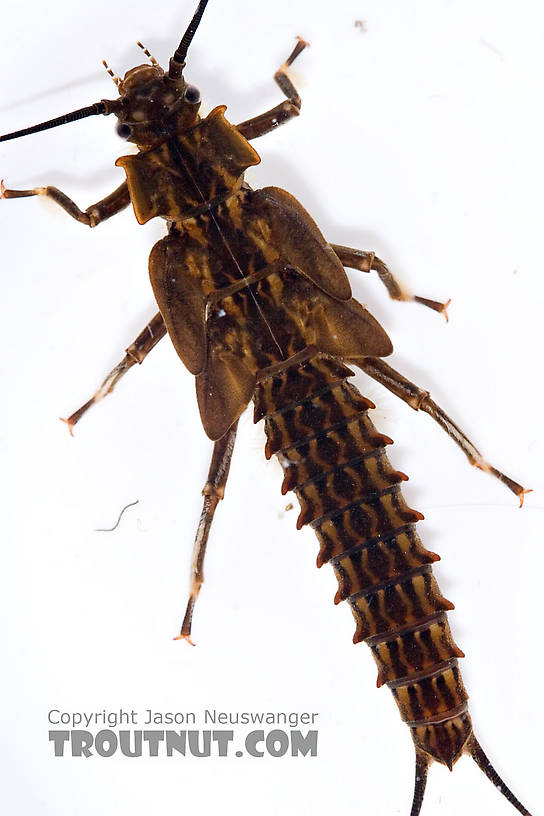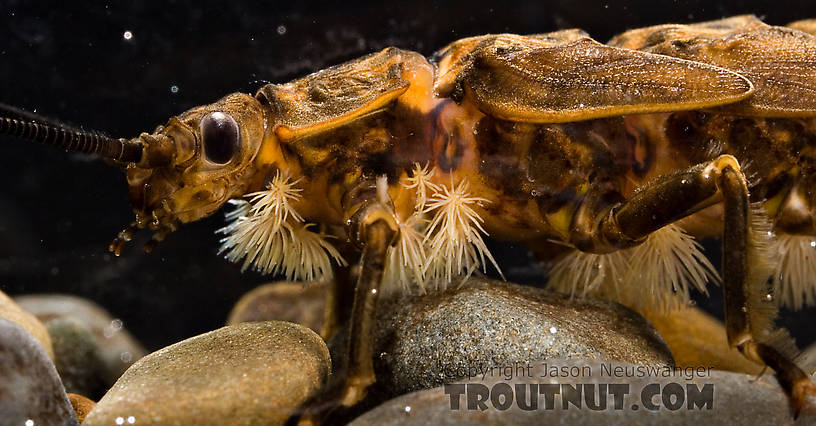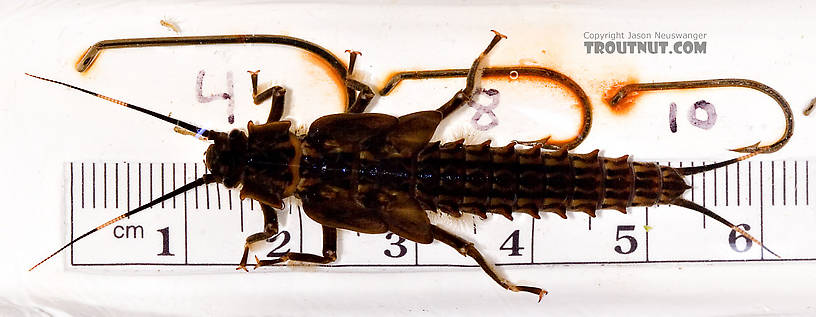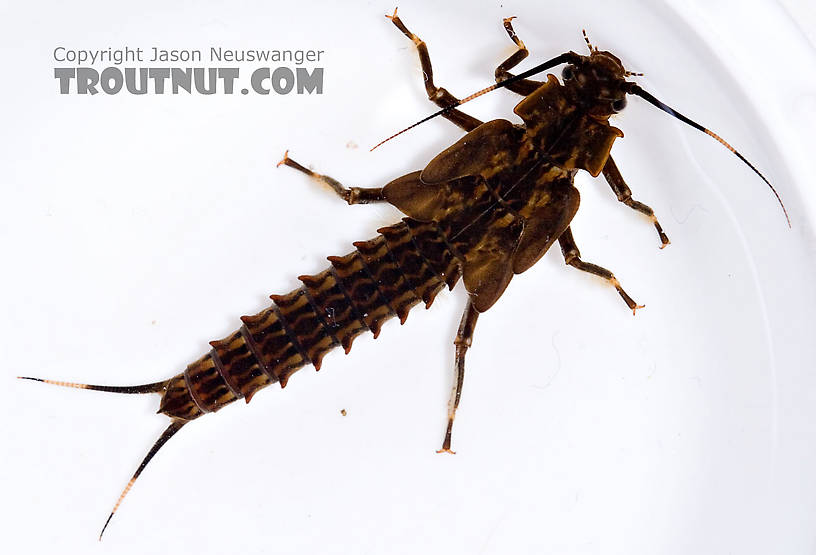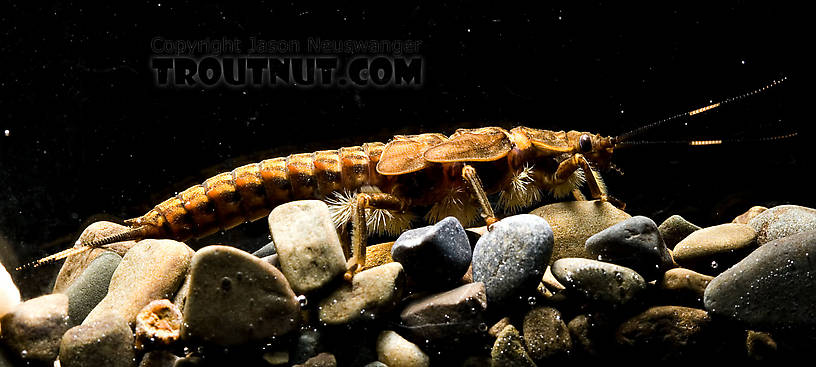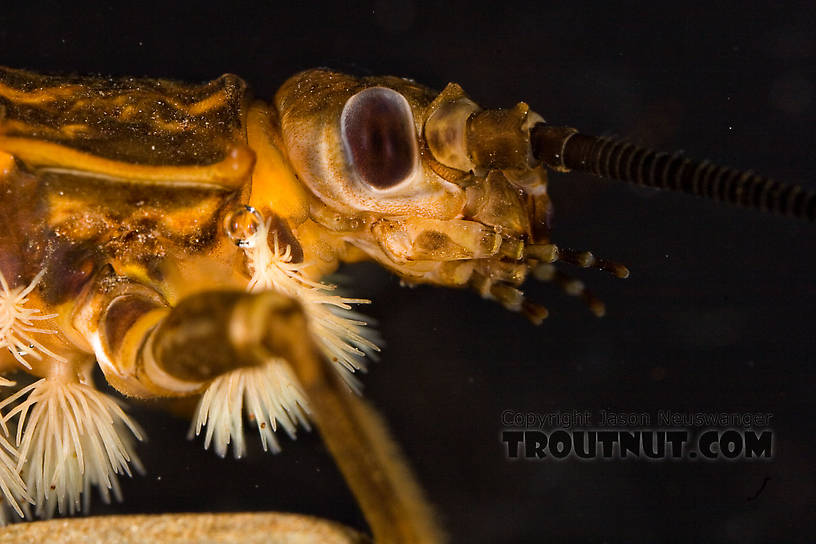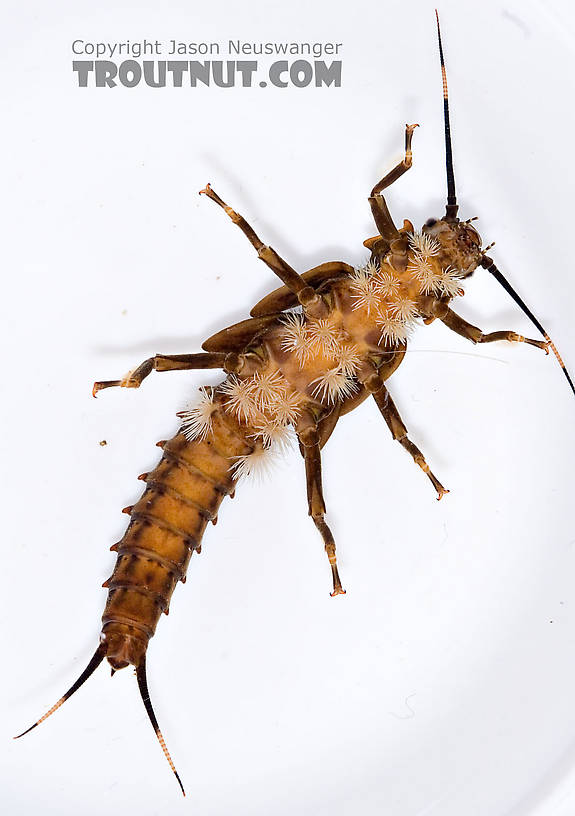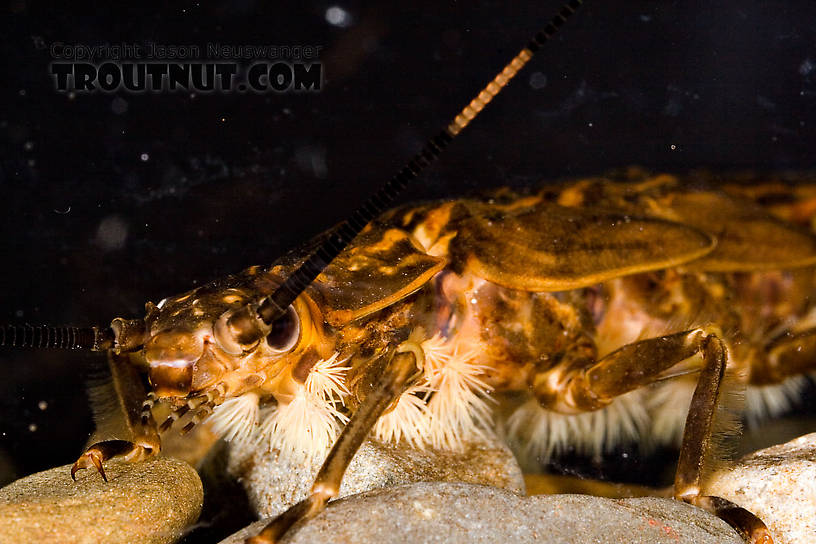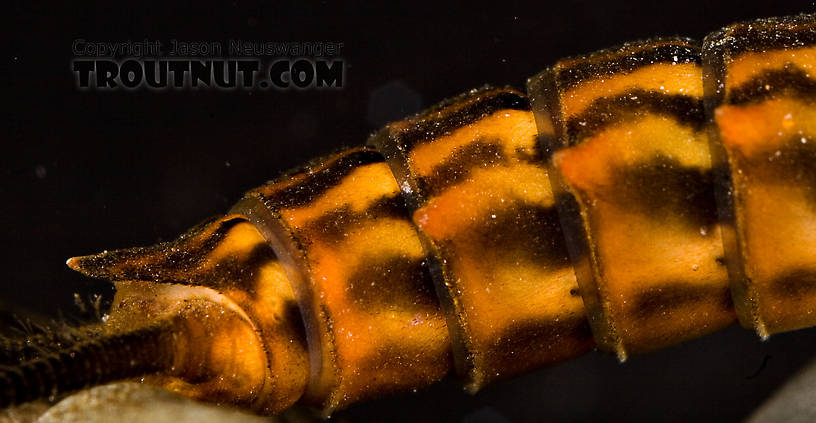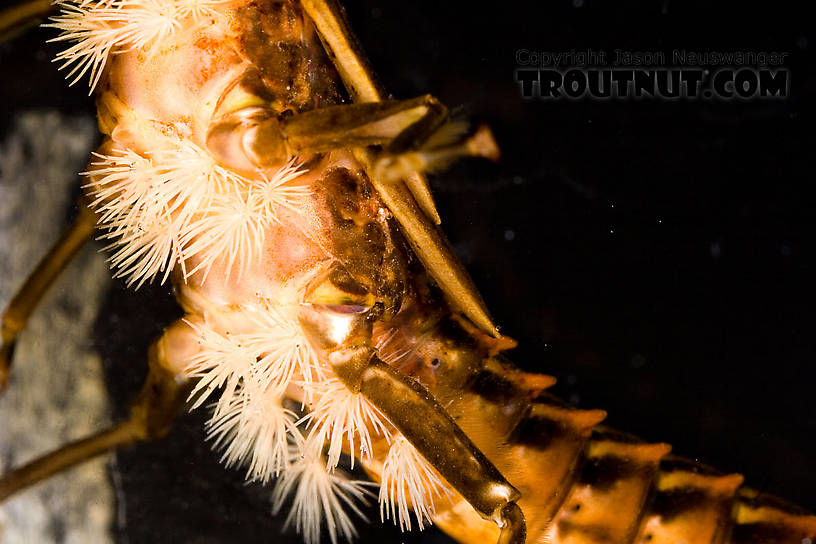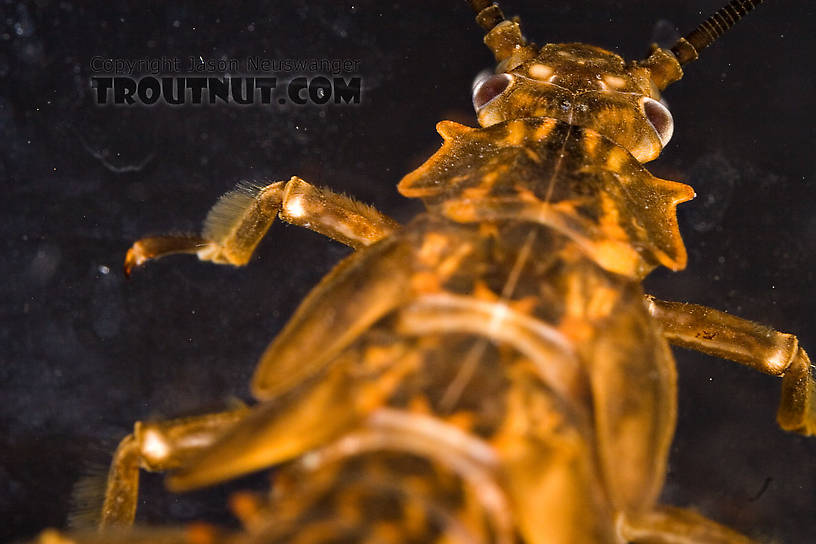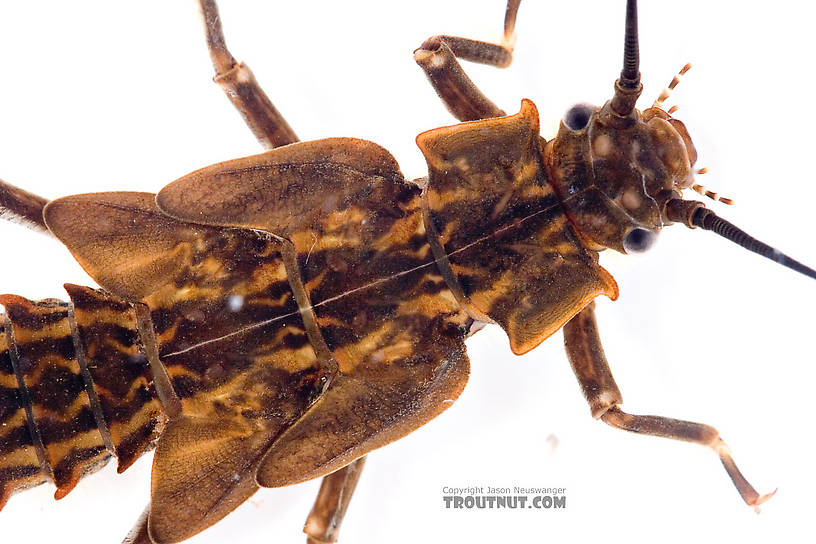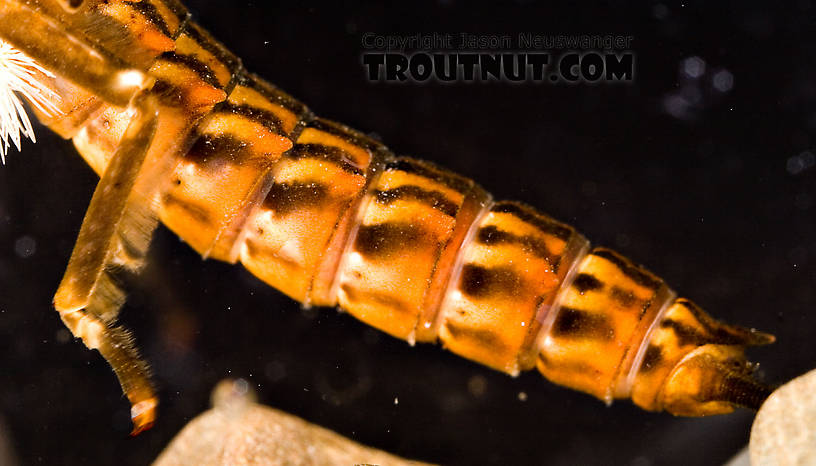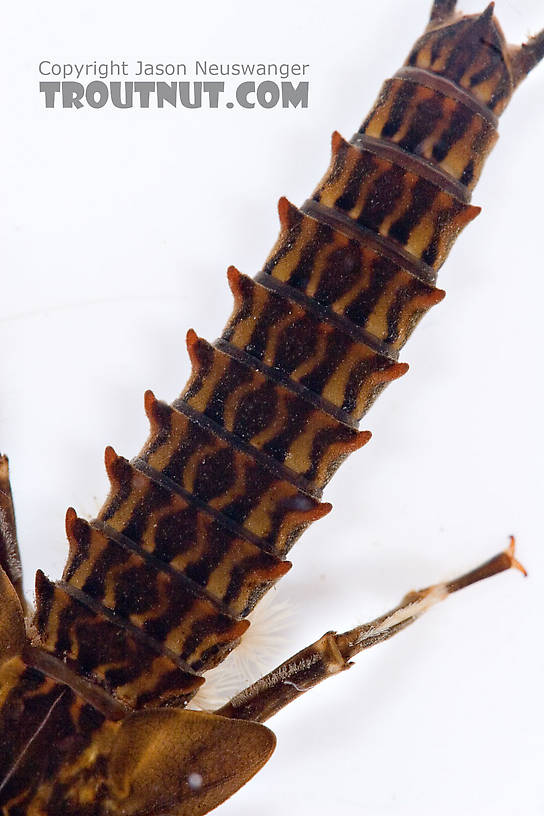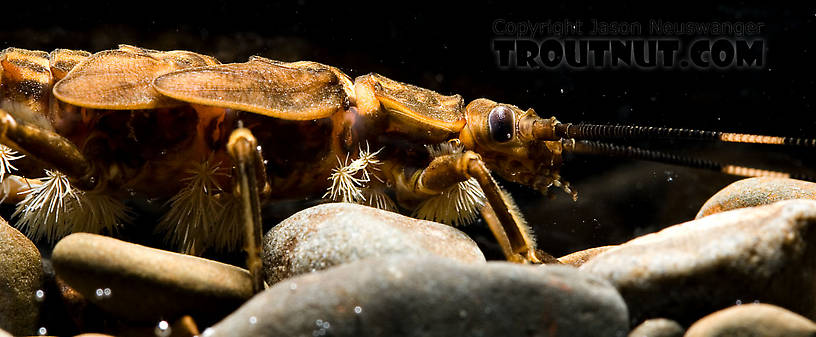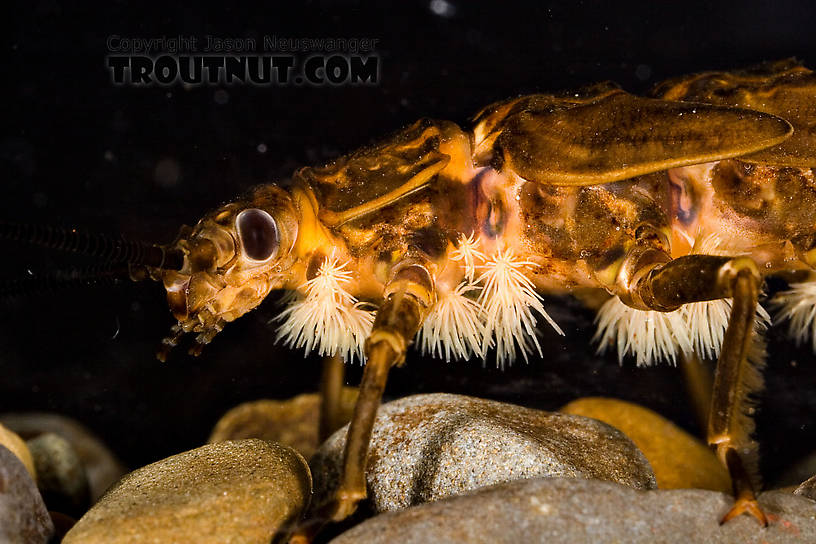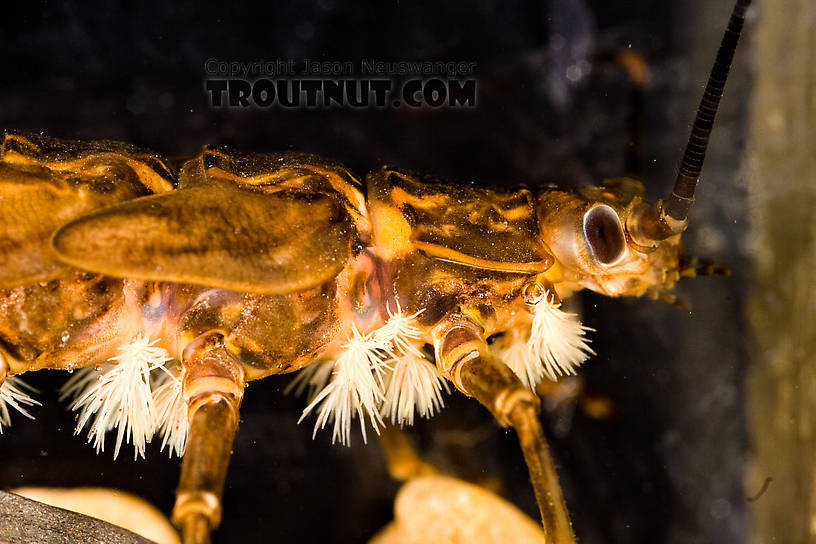Blog & Latest Updates
Fly Fishing Articles
Insects by Common Name


Pteronarcys biloba (Knobbed Salmonfly) Stonefly Nymph Pictures
Classification
Kingdom
Animalia (Animals)
» Phylum
Arthropoda (Arthropods)
» Class
Insecta (Insects)
» Order
Plecoptera (Stoneflies)
» Family
Pteronarcyidae (Salmonflies)
» Genus
Pteronarcys (Salmonflies)
» Species
biloba (Knobbed Salmonfly)
This stonefly was collected from the Neversink River (above reservoir) on May 6th, 2007 and added to Troutnut.com on May 10th, 2007.
Recent Discussions of this Nymph
proteus, biloba, and comstocki 1 Reply »
Pteronarcys proteus has abdominal knobs but has a squared off pronotum (no projection of knob). It differs from dorsata in having knobs on the abdominal segments. There is a picture of a young Pteronarcys proteus nymph here: http://www.discoverlife.org/mp/20q?search=Pteronarcys+proteus
Pteronarcys comstocki has pronotal projections and a spine-like projection on the anterior mesonotal wingpad. I only found them in one stream (trib of Kettle Creek in central PA) of the dozens I've collected. I have not collected them in MD, but they are reported from WV and PA. There is a photo of an immature nymph here: http://www.discoverlife.org/mp/20o?search=Pteronarcys+comstocki
Pteronarcys biloba has pronotal projections but no spines on the wingpads. P. biloba is common up north (NY, VT, NH, ME, etc.). The photo above is of P. biloba. Nice photo here: http://www.discoverlife.org/mp/20q?search=Pteronarcys+biloba
P. scotti is found in the south (SC,GA, etc.)
I never collected P. dorsata, so I figure it must be in larger or warmer rivers.
ReplyHelp with Pteronarcys species characters?Pteronarcys comstocki has pronotal projections and a spine-like projection on the anterior mesonotal wingpad. I only found them in one stream (trib of Kettle Creek in central PA) of the dozens I've collected. I have not collected them in MD, but they are reported from WV and PA. There is a photo of an immature nymph here: http://www.discoverlife.org/mp/20o?search=Pteronarcys+comstocki
Pteronarcys biloba has pronotal projections but no spines on the wingpads. P. biloba is common up north (NY, VT, NH, ME, etc.). The photo above is of P. biloba. Nice photo here: http://www.discoverlife.org/mp/20q?search=Pteronarcys+biloba
P. scotti is found in the south (SC,GA, etc.)
I never collected P. dorsata, so I figure it must be in larger or warmer rivers.
Posted by GONZO on May 19, 2007
Jason,
When I first looked at this specimen, my first instinct was to guess that it was biloba, especially coming from the upper Neversink. But, the more I compare it to the specimen I previously guessed as biloba, the more I see subtle differences. The pronotum is a different shape and the knobs or spines extend further along the abdomen. Perhaps these are variable traits or gender differences, but I'm starting to wonder about both IDs.
Of the Eastern (or transcontinental) species, I'm pretty familiar with dorsata and biloba, and I've seen a few specimens that I'm pretty sure are comstocki. These latter specimens had fearsome-looking long spines along the abdomen and I guessed at the comstocki ID mostly because its nickname is the "spiny salmonfly."
I've seen cladistic diagrams that indicate that scotti is considered to be the closest relative of biloba, but it seems to have a more southerly distribution. (That diagram also seemed to explain why Allonarcys is no longer favored as a separate genus for the Pteronarcys species with spines or knobs.)
I'm not aware of the species descriptions of proteus or pictetii. Until I saw a survey of the Delaware River basin, I assumed that the large unknobbed Pteronarcys that I had seen on the main branch were dorsata (and that's what Ernie S. said they were), but the survey lists only biloba, comstocki, and proteus.
Could someone provide some characters for these other species? It would help to resolve my current confusion and would be greatly appreciated.
ReplyWhen I first looked at this specimen, my first instinct was to guess that it was biloba, especially coming from the upper Neversink. But, the more I compare it to the specimen I previously guessed as biloba, the more I see subtle differences. The pronotum is a different shape and the knobs or spines extend further along the abdomen. Perhaps these are variable traits or gender differences, but I'm starting to wonder about both IDs.
Of the Eastern (or transcontinental) species, I'm pretty familiar with dorsata and biloba, and I've seen a few specimens that I'm pretty sure are comstocki. These latter specimens had fearsome-looking long spines along the abdomen and I guessed at the comstocki ID mostly because its nickname is the "spiny salmonfly."
I've seen cladistic diagrams that indicate that scotti is considered to be the closest relative of biloba, but it seems to have a more southerly distribution. (That diagram also seemed to explain why Allonarcys is no longer favored as a separate genus for the Pteronarcys species with spines or knobs.)
I'm not aware of the species descriptions of proteus or pictetii. Until I saw a survey of the Delaware River basin, I assumed that the large unknobbed Pteronarcys that I had seen on the main branch were dorsata (and that's what Ernie S. said they were), but the survey lists only biloba, comstocki, and proteus.
Could someone provide some characters for these other species? It would help to resolve my current confusion and would be greatly appreciated.
Start a Discussion of this Nymph:
Top 10 Fly Hatches
Top Gift Shop Designs
Eat mayflies.
Top Insect Specimens
Miscellaneous Sites
Troutnut.com is copyright © 2004-2024 Jason
Neuswanger (email Jason). See my FAQ for information about use of my images.
 privacy policy
privacy policy

